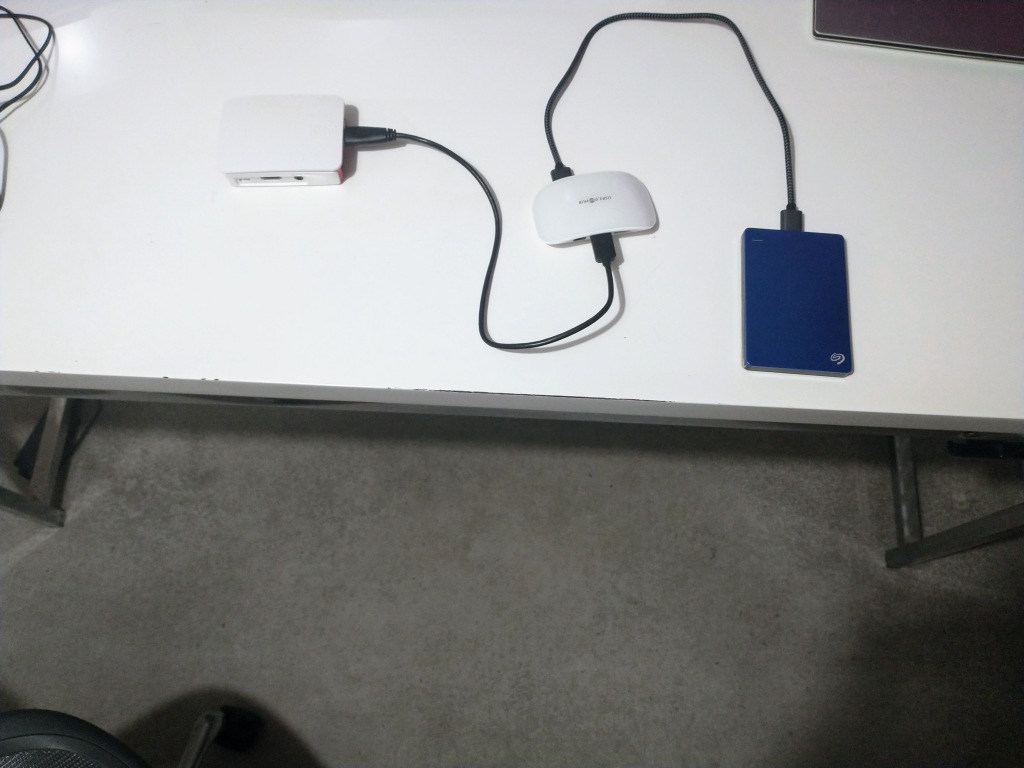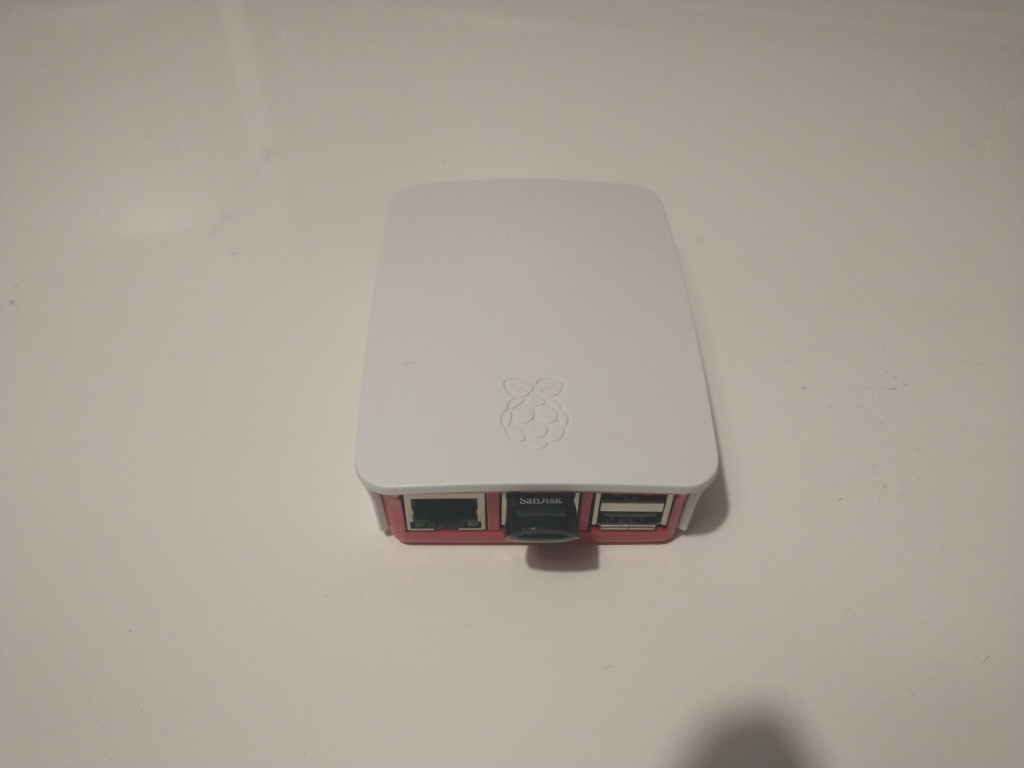Since setting up my Raspberry Pi as a Plex Media Server a few years ago, the reliable application of Moore’s Law has brought us to a point where a humble USB flash drive now has sufficient capacity to cope with all of my media files and then some.
Therefore, I felt it was probably time to retire the powered external HDD that had been doing service as storage and replace it with a nice, compact stick.


The Pi in question is a Pi3 and is running Raspbian 11 (Bullseye).
The main consideration here was that I wanted to ensure that the new storage was visible to Plex from the same location as before so that I didn’t have to go through the rigmarole of validating and correcting all of the metadata that Plex retrieves for each media file ( Movie details etc).
Having copied the relevant files from the HDD to the new Flash Drive, I was ready to perform this “simple” admin task.
The steps to accomplish this are set out below.
Also detailed are some of the issues I ran into and how I managed to solve them, just in case you’ve stumbled across this post in a desparate search for a solution to your beloved fruit-based computer having turned into a slice of Brick Pi. In fact, let’s start with…
Pi not booting after editing /etc/fstab
On one occasion, after editing the fstab file and rebooting, I found the Pi unresponsive.
Having connected a display and keyboard to the Pi and starting it again, I was greeted with the message :
"You are in emergency mode. After logging in, type "journalctl -xb" to view system logs, "systemctl reboot to reboot, "systemctl default" or ^D to try again to boot into the default mode.
Press Enter to continue
…and after pressing enter…
"Cannot open access to console, the root accoutn is locked.
See sulogin(8) man page for more details.
Press Enter to continue...
…after which pressing Enter seems to have little effect.
According to this Stack Exchange thread, one solution would be to remove the SD card from the Pi, mount it on a suitable filesystem on alternative hardware ( e.g. a laptop) and edit the /etc/fstab file to remove the offending entry.
I took the other route…
Start by Rebooting and hold down the [Shift] key so that Raspbian takes you to the Noobs screen.
Now, from the top menu, select Edit config. This opens an editor with two tabs – config and cmdline.txt
We want to edit the cmdline.txt so click on that tab.
Despite appearances, this file is all on a single line so when you append to it, you need to add a space at the start and not a newline. To persuade Raspbian to give us access to a command prompt, we need to append :
init=/bin/shNow, save the file then choose Exit (Esc) from the NOOBS menu so that the Pi continues to boot.
You should now be resarded with a ‘#’ prompt.
At this point, the filesystem is mounted but is read only. As we want to fix the issue by editing (i.e. writing to) the /etc/fstab file, we need to remount it in read/write mode. We can do this by typing the following at the prompt :
mount -n -o remount,rw /Now, finally, I can use nano to remove the offending entry from /etc/fstab
nano /etc/fstabAt this point, you have the option of editing the cmdline.txt so that the Pi starts normally, by editing the file :
nano /boot/cmdline.txtAlternatively, you may prefer to let the Pi restart and hold down [SHIFT] and do the edit in the NOOBs screen.
You would then exit NOOBS and the Pi should boot normally.
Either way, we can reboot by typing :
reboot…at the prompt.
Hopefully, you won’t need to go through any of this pain as what follows did work as expected…
Unmounting the old drive
First of all, we need to identify the device :
sudo fdisk -l |grep /dev/sdaIn my case, there’s just one device – /dev/sda1.
Now I need to unmount it :
umount /dev/sda1We then need to ensure that it isn’t mounted next time we boot
to do this, we need to edit /etc/fstab and comment out the appropriate entry :
sudo nano /etc/fstabRather than deleting it altogether, I’ve just commented it out the relevant line, in case I need to put it back for any reason :
# Below is entry for Seagate external HDD via a powered USB Hub
#UUID=68AE9F66AE9F2C16 /mnt/usbstorage ntfs nofail,uid=pi,gid=pi 0 0
In order to make sure that this has all worked as expected, I physically disconnect the external HDD from the pi and restart it with
sudo rebootThe correct way to mount a Flash Drive
Well, these days the simplest way to mount the drive is just to plug it in to one of the USB ports on the Pi. Raspbian then automagically mounts it to :
/media/pi
Initially, I thought I’d try to simply create a symbolic link under the now empty mount point where the external HDD used to live :
ln -s ../../media/pi/SanDisk/Media /mnt/usbstorage…and then restart the Plex Server…
sudo service plexmediaserver stop
sudo service plexmediaserver startUnfortunately, whilst we don’t get any errors on the command line, the Plex itself refuses to read the link and insisted that all of the media files under /mnt/usbstorage are “Unavailable”.
Therefore, we need to do things properly and explicitly mount the Flash Drive to the desired mount point.
First of all, we need to confirm the type of filesystem on the drive we want to mount.
Whilst fdisk gives us the device name, it seems to be hedging it’s bets as regards the filesystem type :
sudo fdisk -l |grep /dev/sda
Disk /dev/sda: 466.3 GiB, 500648902656 bytes, 977829888 sectors
/dev/sda1 7552 977829887 977822336 466.3G 7 HPFS/NTFS/exFAT
Fortunately, there’s a more reliable way to confirm the type, which gives as the UUID for the Flash Drive as well…
sudo blkid /dev/sda1
/dev/sda1: LABEL="SanDisk" UUID="8AF9-909A" TYPE="exfat" PARTUUID="c3072e18-01"
The type of the old external HDD was NTFS, so it’s likely I’ll need to download some packages to add exFat support on the pi :
sudo apt install exfat-fuse
sudo apt install exfat-utils
Once apt has done it’s thing and these packages are installed, we can then add an entry to fstab to mount the Flash Drive on the required directory every time the Pi starts :
sudo nano /etc/fstabThe line we need to add is in the format:
UUID=<flash drive UUID> <mount point> <file system type> <options> 0 0
The options I’ve chosen to specify are :
- defaults – use the default options rw, suid, dev, exec, auto, nouser and async
- users – Allow any user to mount and to unmount the filesystem, even when some other ordinary user mounted it.
- nofail – do not report errors for this device if it does not exist
- 0 – exclude from any system backup
- 0 – do not indluce this device in fsck check
So, my new entry is :
UUID=8AF9-909A /mnt/usbstorage exfat defaults,users,nofail 0 0
Once these changes are saved, we can check that the command will work :
unmount /dev/sda1
mount -a
If you don’t get any feedback from this command, it’s an indication that it worked as expected.
You should now be able to see the file system on the flash drive under /mnt/usbstorage :
ls -l /mnt/usbstorage/
total 2816
-rwxr-xr-x 1 root root 552605 Sep 23 2021 Install SanDisk Software.dmg
-rwxr-xr-x 1 root root 707152 Sep 23 2021 Install SanDisk Software.exe
drwxr-xr-x 5 root root 262144 Dec 31 16:19 Media
drwxr-xr-x 3 root root 262144 Apr 10 2018 other_plex_metadata
drwxr-xr-x 6 root root 262144 Mar 11 2017 Photos
-rwxr-xr-x 1 root root 300509 Sep 23 2021 SanDisk Software.pdf
One final step – reboot the pi once more to ensure that your mount is permanent.
With that done, I should be able to continue enjoying my media server, but with substantially less hardware.
References
There are a couple of sites that may be of interest :
There is an explanation of the fstab options here.
You can find further details on the cmdline.txt file here.

